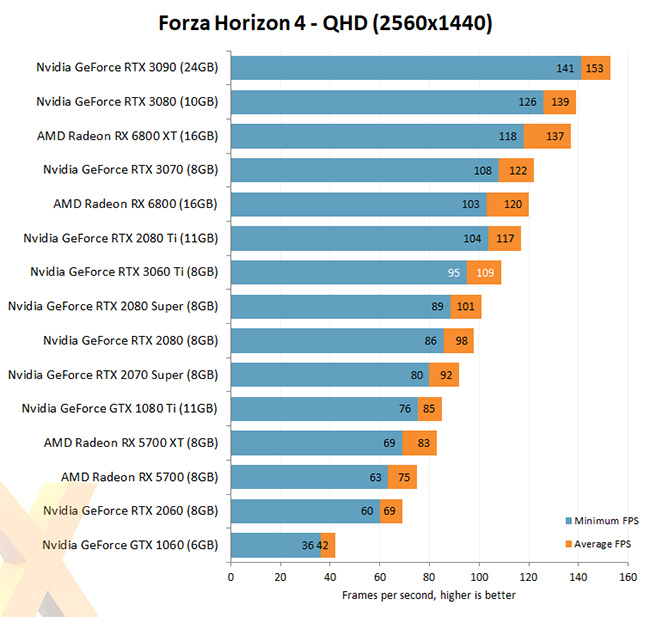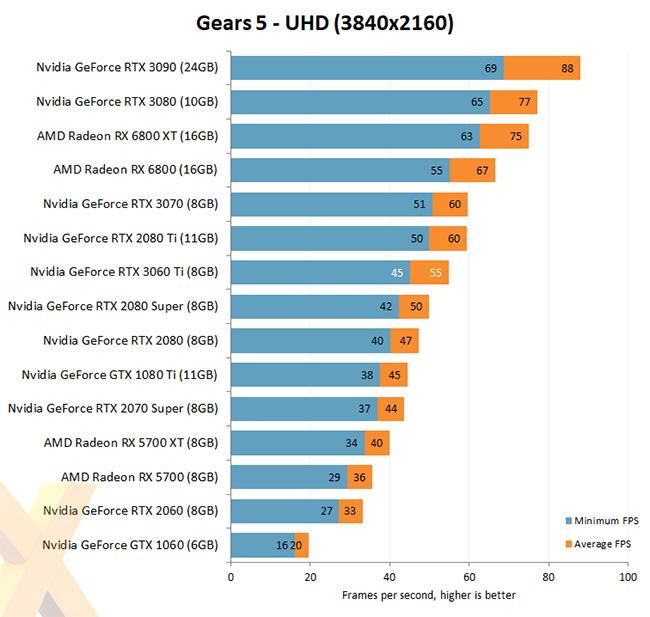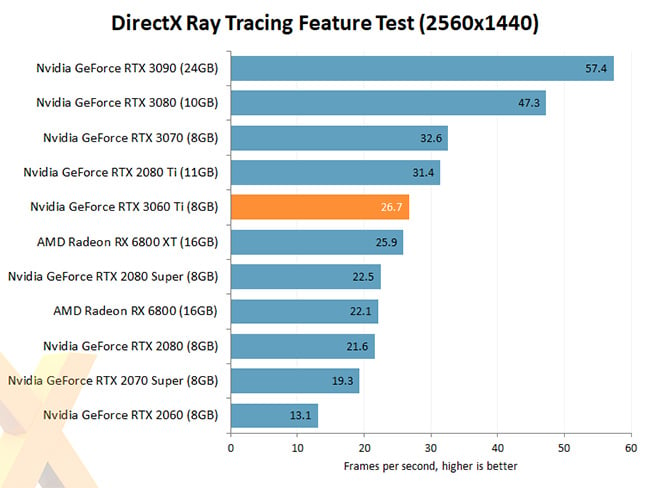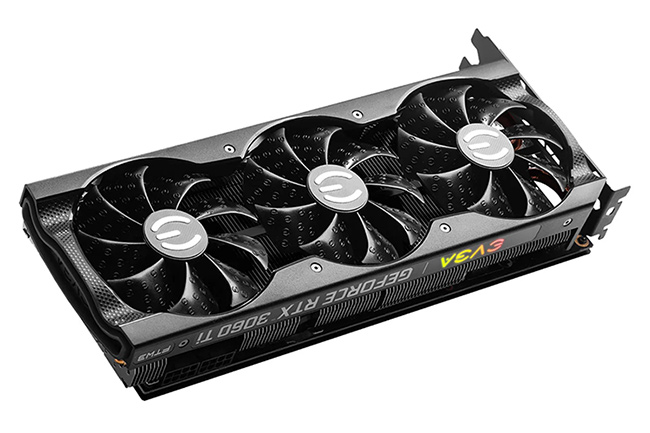Our Aim
To provide you with an overview on New And existing technologies, hopefully helping you understand the changes in the technology. Together with the overviews we hope to bring topical issues to light from a series of independent reviewers saving you the time And hassle of fact finding over the web.
We will over time provide you with quality content which you can browse and subscribe to at your leisure.
TekSpek 's

NVIDIA GeForce RTX 3060Ti
Date issued:
The deluge of cutting-edge hardware continues. NVIDIA, who kicked off proceedings with the hugely impressive GeForce RTX 3080, has slowly but surely massaged the underlying Ampere architecture to suit other areas of the market. RTX 3090 blows your socks off at $1,499, RTX 3070 entices more users at $499, and the latest addition, RTX 3060 Ti, brings the goodness of Ampere to a wider audience starting at just $399.
This is the area of the market where large numbers are shipped, and on paper, RTX 3060 Ti has the potential to be a best seller in the latest generation of graphics hardware. Before we examine real-world performance, let's break out the specification table to see exactly where the most affordable Ampere GPU to date fits in.
Ampere Goes Mainstream | ||||||||||
|---|---|---|---|---|---|---|---|---|---|---|
| RTX 3090 | RTX 3080 | RTX 3070 | RTX 3060 Ti | RTX 2080 Ti | RTX 2080 Super | RTX 2080 | RTX 2070 Super | RTX 2060 | ||
| Launch date | Sep 2020 | Sep 2020 | Oct 2020 | Dec 2020 | Sep 2018 | July 2019 | Sep 2018 | July 2019 | Jan 2019 | |
| GPU | GA102 | GA102 | GA104 | GA104 | TU102 | TU104 | TU104 | TU104 | TU106 | |
| Architecture | Ampere | Ampere | Ampere | Ampere | Turing | Turing | Turing | Turing | Turing | |
| Process (nm) | 8 | 8 | 8 | 8 | 12 | 12 | 12 | 12 | 12 | |
| Transistors (bn) | 28.3 | 28.3 | 17.4 | 17.4 | 18.6 | 13.6 | 13.6 | 13.6 | 10.8 | |
| Die Size (mm²) | 628.4 | 628.4 | 392.5 | 392.5 | 754 | 545 | 545 | 545 | 445 | |
| PCIe | 4.0 | 4.0 | 4.0 | 4.0 | 3.0 | 3.0 | 3.0 | 3.0 | 3.0 | |
| Base Clock (MHz) | 1,400 | 1,440 | 1,500 | 1,500 | 1,350 | 1,650 | 1,515 | 1,605 | 1,365 | |
| Boost Clock (MHz) | 1,695 | 1,710 | 1,725 | 1,665 | 1,545 | 1,815 | 1,710 | 1,770 | 1,680 | |
| Shaders | 10,496 | 8,704 | 5,888 | 4,864 | 4,352 | 3,072 | 2,944 | 2,560 | 1,920 | |
| GFLOPS | 35,581 | 29,768 | 20,314 | 16,197 | 13,448 | 11,151 | 10,068 | 9,062 | 6,221 | |
| Tensor Cores | 328 | 272 | 184 | 152 | 544 | 384 | 368 | 320 | 240 | |
| RT Cores | 82 | 68 | 46 | 38 | 68 | 48 | 46 | 40 | 30 | |
| Memory Size | 24GB | 10GB | 8GB | 8GB | 11GB | 8GB | 8GB | 8GB | 6GB | |
| Memory Bus | 384-bit | 320-bit | 256-bit | 256-bit | 352-bit | 256-bit | 256-bit | 256-bit | 192-bit | |
| Memory Type | GDDR6X | GDDR6X | GDDR6 | GDDR6 | GDDR6 | GDDR6 | GDDR6 | GDDR6 | GDDR6 | |
| Memory Clock | 19.5Gbps | 19Gbps | 14Gbps | 14Gbps | 14Gbps | 15.5Gbps | 14Gbps | 14Gbps | 14Gbps | |
| Memory Bandwidth | 936 | 760 | 448 | 448 | 616 | 496 | 448 | 448 | 336 | |
| ROPs | 112 | 96 | 96 | 80 | 88 | 64 | 64 | 64 | 48 | |
| Texture Units | 328 | 272 | 184 | 152 | 272 | 192 | 184 | 160 | 120 | |
| L2 cache (KB) | 5,120 | 5,120 | 4,096 | 4,096 | 5,632 | 4,096 | 4,096 | 4,096 | 3,072 | |
| SLI Support | Yes | No | No | No | Yes | Yes | Yes | Yes | Yes | |
| TDP (watts) | 350 | 320 | 220 | 200 | 250 | 250 | 215 | 215 | 160 | |
| MSRP | $1,499 | $699 | $499 | $399 | $999 | $699 | $699 | $499 | $349 | |
You don't need to be a GPU technician to know where RTX 3060 Ti comes from. As is often the case, a 'new' GPU is derived from existing silicon, with NVIDIA in this instance using the RTX 3070's GA104 chip as the 8nm building block.
This time around, the 17.4-billion transistor die sees the number of streaming multiprocessors reduced from 46 on RTX 3070 to 38 on RTX 3060 Ti. As a consequence, the number of shaders is dialled down to 4,864, while dedicated Tensor and RT Cores are also scaled back to the tune of 17 per cent. Important tweaks when attempting to create product segmentation, yet it is interesting to note that the back end has been kept largely intact, with a 256-bit bus interfacing with 8GB of GDDR6 memory operating at the same 14Gpbs.
On-paper specifications intimate that RTX 3060 Ti will deliver approximately 85 per cent of the performance of its GA104 sibling, albeit for $100 less and in a more efficient package, with the baby of the current Ampere crop carrying a relatively frugal 200W TDP. Don't, however, let the mid-range positioning fool you into thinking this is a lightweight solution. The strength of the Ampere architecture is such that NVIDIA's $400 GPU is able to better some of the very best cards from the previous generation.

Benchmarks from leading review sites put the RTX 3060 Ti ahead of an RTX 2080 Super that fetched $699 at launch, and astonishingly, the $400 Ampere is within touching distance of a $999 RTX 2080 Ti. It is without a doubt a stellar fit for high-quality gaming at an increasingly popular QHD resolution.

4K UHD is deemed the ultimate destination for next-generation gaming, and RTX 3060 Ti is able to make it happen. Image quality may need to be sacrificed in order to achieve a silky smooth 60 frames per second in most titles, yet make no mistake, this is the first $400 GPU able to produce convincing 4K results.

RTX 3060 Ti delivers tremendous performance at an alluring price point, and the revolutionary nature of the Ampere architecture is such that there's an element of future proofing against the games of tomorrow. Second-generation ray tracing performance is better than anything on offer from the competition, and with DLSS finding its feet, there's further performance potential waiting to be unleashed.
Summary
Of the recent avalanche of GPUs, NVIDIA's RTX 3060 Ti is the one most likely to resonate with a wide range of PC gamers. With prices starting at $400, the latest 30-Series graphics card is excellent at QHD, decent at UHD, and armed with forward-looking Ampere tech that will help drive next-generation visuals. There is little to criticise in such an accomplished GPU.

A wide range of GeForce RTX 3060 Ti graphics cards will be available to purchase right here at Scan Computers.